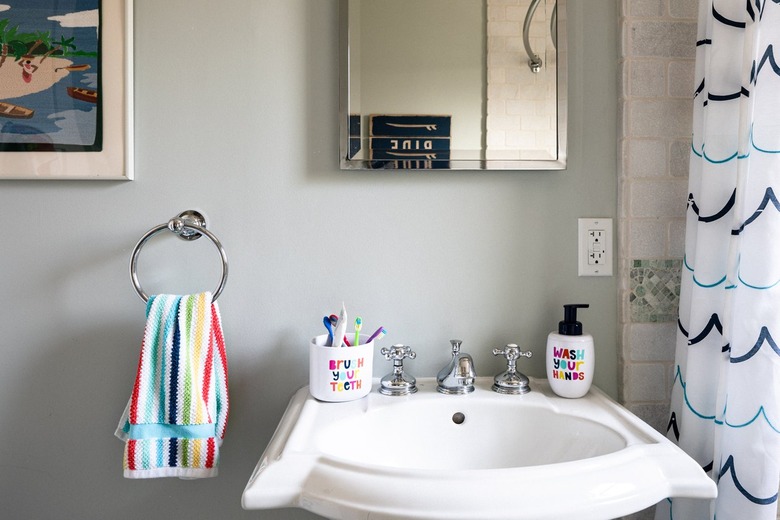How To Install A Shower Curtain Rod And Not Crack The Tile
We may receive a commission on purchases made from links.
Shower curtains are a necessity to keep water inside the bathtub or shower and off the bathroom floor. While there are a multitude of options available, when the walls feature tiles, drilling holes into ceramic or porcelain requires patience and a drill bit designed for use on tiles and other hard surfaces. Before you drill mounting holes in the bathroom tiles, follow the old saying: Proper prior planning prevents poor performance.
Install Brackets for the Rod
Install Brackets for the Rod
Installing the shower curtain rod brackets on a tile wall requires a drill and carbide bit for ceramic tiles or a diamond-tipped bit for porcelain or glass tiles. The diamond bit will also work on ceramic tile, so when in doubt, get the diamond-tipped bit.
Shower curtains are generally 70 to 72 inches tall, so add an additional 2 to 4 inches to accommodate the desired rod height and measure up from the floor to position the brackets. Place painter's or masking tape over the tile and mark the locations of the bracket holes on it; use a spirit level to ensure the brackets and rod will be level. Try to position the brackets so the holes go through the center of a tile, which helps prevent cracking, though you can drill through the grout if absolutely necessary. Aligning the brackets with the wall studs is a plus; wall anchors won't be necessary.
Put on your safety gear and then slowly drill into the tile using light to medium pressure; don't go too fast or press too hard to avoid cracking the tile. Once the bit breaks through the glaze, the interior of the tile is softer, and you can increase the speed. When screwing the bracket screws into the mounting holes, don't give them that last hard twist, as the tiles can crack from too much pressure from the bracket.
Replace a Broken Tile
Replace a Broken Tile
A broken tile isn't an utter disaster. Put down an old blanket, a tarp, or cardboard to protect the floor and tub. Cover the surrounding tiles with painter's tape or masking tape and then scrape the grout around the cracked tile with a grout saw or scoring tool. Using a chisel and hammer, tap lightly to chip out the tile, working from the center to the edges.
Use a putty knife to remove any adhesive left on the drywall or cement board behind the tile. Also remove the rest of the grout around the edges and vacuum thoroughly. Measure an intact tile for size and then take a large piece of the broken tile to the tile store or home improvement center to find a match in color and size.
Test fit the new tile to ensure it is the right size and slightly shallower than the other tiles. Spread tile adhesive on the back and center the tile in the space, pressing lightly so it is even with the surrounding tiles. Tape to hold it in place and allow it to dry overnight or according to the instructions on the adhesive label. Add grout and smooth with a gloved fingertip before removing the excess with a damp sponge and allowing it to dry for several days.
Consider Self-Adhesive Brackets
Consider Self-Adhesive Brackets
Specifically designed for use on smooth surfaces, like ceramic or porcelain tiles, adhesive-held brackets support a shower curtain rod without drilling. Installation requires a clean, smooth surface, so be sure to clean the tiles first and allow them to fully dry. Measure and mark the location for the brackets. It's easiest to install one side and then level the rod and mark the location for the second bracket so your rod is perfectly even.
These brackets use double-sided tape. Pull off the backing material on one side of the tape and stick it to the wall. Remove the backing material on the other side of the tape and stick the bracket on it. Press hard for a few seconds to ensure good contact with the tape and then repeat on the other wall.
